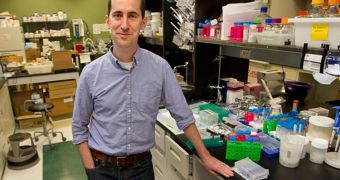Stanford University scientists have recently conducted a study meant to determine how living cells produce and detect force. These abilities are essential for a wide array of natural processes, and studying them in detail could finally reveal how the most complex organisms organize themselves.
Extremely complex self-organization is one of the hallmarks of advanced lifeforms. Yet, despite their best efforts, scientists have thus far been unable to figure out precisely how this process occurs.
An interdisciplinary group of investigators at Stanford have recently set out to shed more light on this mystery, by conducting a study in which they measured the nanoscale mechanical tension of cells.
In addition to figuring out more data on the origins of complex life, this line of research could also have more immediate applications, such as figuring out how tissues grow, and how cancer tumors develop.
A phenomenon scientists were particularly interested in figuring out is one that occurs when certain types of cells are placed on a microscope slide. Researchers noticed that their natural tendency is to search each other out, come together, and then form a primitive type of tissue.
What the new investigation did was observe the mechanical forces that allow the cells to move towards each other, and then interact to form tissues. The research team included biologists, physiologists, chemical engineers and mechanical engineers, all from Stanford.
The group was led by assistant professor of chemical engineering Alexander Dunn. He is also an author of a new paper detailing the findings, which is published in the latest issue of the esteemed journal Proceedings of the National Academy of Sciences (PNAS).
With the help of a new force-sensing technique, experts were able to study the mysterious proteins that make up the mechanical parts of cells. “Cells are really just machines […] They rely on thousands of moving parts that give the cell shape and control of its destiny,” Dunn explains.
“Our research shows that forces at cell-cell contacts can in fact be communicated from one cell to its neighbors. The theorized mechanical signaling mechanism is feasible,” the expert goes on to say.
“At this point, we now know that a cell exerts exquisite control over the balance of its internal forces and can detect force exerted from outside by its neighbors, but we still know next to nothing about how. We are extremely curious to find out more,” Dunn concludes.

 14 DAY TRIAL //
14 DAY TRIAL //